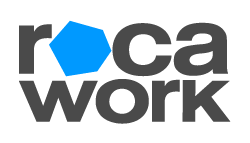Why Cheap Customer Experience Tools Often End Up Costing More
In a world where operational efficiency and customer satisfaction are paramount, choosing the right customer experience (CX) platform is a strategic decision. Budget-friendly tools are appealing on the surface, but can often mask hidden costs and long-term inefficiencies. Drawing from over a decade of hands-on experience with platforms like Zendesk, this article explores why low-cost CX tools may end up costing more—financially and operationally—than their premium counterparts.
The Hidden Price of Early Cancellations
A common journey for many organizations begins with adopting a reputable CX platform like Zendesk. Initially impressed, they often hesitate at the pricing and pivot to a more affordable alternative. However, disappointment usually follows within months due to subpar performance or lacking features.
These switches often come with contractual consequences. Companies pay upfront for the cheaper tool, only to abandon it mid-cycle. They return to the original platform, now incurring the cost of the premium tool plus the remainder of their initial commitment. The result? A significant financial hit without any return on the cheaper investment.
Advice: Before switching for cost reasons alone, weigh the exit penalties and trial limitations. A short-term saving might lead to long-term regret.
Migration Costs That Sneak Up on You
Switching platforms is rarely plug-and-play. Data migration—including customer histories, support tickets, and workflows—requires significant time and resources. For teams to operate effectively, they need immediate access to historical context.
Rebuilding workflows and training staff on a new interface takes time—often more time than anticipated. The disruption can affect performance, customer satisfaction, and team morale.
Advice: Always factor in the hidden costs of migration—both technical and human. These can quickly erase any initial savings.
Integration Challenges with Budget Platforms
Modern customer service depends on the seamless integration of tools—CRM systems, chatbots, email clients, and analytics dashboards. Budget platforms often feature underdeveloped or limited APIs, making integration difficult or impossible without workarounds.
These workarounds can be brittle and expensive to maintain. They may require external consultants, custom development, or result in time-consuming manual processes.
Advice: Assess the maturity of a platform’s ecosystem before committing. Poor integration can silo data and hamper efficiency.
Configuration Complexity and Long-Term Maintenance
Setting up a new CX platform from scratch—especially one that lacks intuitive UX—can result in steep learning curves. Although some budget platforms offer free onboarding, actual setup often demands technical knowledge. Many teams end up hiring external help or dedicating internal resources just to reach a functional state.
Even after setup, maintaining the platform can be costly. Missing features often need to be replicated manually, and updates can break existing customizations. Over time, the effort spent maintaining a budget tool can exceed the cost of a premium one.
Advice: Consider not just the purchase price, but the total cost of ownership—including learning, setup, and maintenance.
Conclusion
The most intangible—but most important—cost is the headache. Constant troubleshooting, patching broken features, and chasing support for issues that shouldn’t exist become a daily burden. Leaders and teams alike end up focused on keeping the system functional rather than delivering value to customers.
This pattern isn’t limited to one region or type of company. Across different cultures and economies, teams are learning that a “cheaper” tool can create more friction than it solves. In some markets, saving on tech means hiring more people to handle what automation should. In others, poor work ethic or system misuse can neutralize even the best platforms.
Final Thought: You don’t always need the most expensive solution—but you do need the right one. Choose a tool that matches your team’s capabilities, growth goals, and workflow needs. Sometimes, paying more upfront is actually the most cost-effective move in the long run.
Let’s get to know each other!
